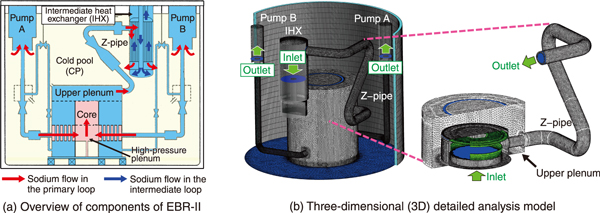
Fig.1 Overview of components and three-dimensional (3D) detailed analysis models in EBR-II in the U.S.

Fig.2 Comparison of numerical results and measured data
Development of the base technology using numerical simulation for research and development to accelerate the development of sodium-cooled fast reactors (SFRs) is ongoing to actualize GX (green transformation) for realizing a carbon-neutral society and stable energy supply.
In this study, to analyze the plant performance with different physics at different scales, a coupled analysis method is being developed using a one-dimensional (1D) plant dynamics analysis code and a three-dimensional (3D) detailed analysis code for whole-plant behavior and specific phenomena, respectively, in the region showing multidimensional behaviors. As an example, the numerical results of coupled 1D-3D analysis of the test conducted in the experimental SFR, EBR-II, in the U.S. are reported herein. In the test, the pumps of the intermediate loops were stopped without scram. This test was performed to examine the effect of the “feedback reactivity” change with decreasing reactor power.
Fig.1(a) shows an overview of the components in the primary loops of EBR-II. As the sodium flows through the core into the upper plenum of the reactor vessel, its temperature increases. The hot sodium passing through the Z-shape piping (Z-pipe) exchanges heat with the sodium in the secondary loop in the intermediate heat exchanger (IHX); the cooled sodium flows into the cold pool (CP). The sodium pressurized by the primary pumps returns to the core. The hot sodium flows into the CP with the cold sodium, and thermal stratification occurs, during the transient. The thermal stratification in the CP and the increase in the core inlet temperature cannot be easily predicted by the 1D analysis with the one-volume mixing model, in which the fluids in the volume are mixed simultaneously. Therefore, 3D modeling as shown in Fig.1(b) is necessary for the CP. The coupled 1D-3D method is used for this analysis.
Fig.2(a) and (b) show the results of the detailed analysis of the CP by the coupled analysis. The thermal stratification in the CP is successfully predicted by the 3D analysis. Fig.2(c) compares the results of the core inlet temperature according to the results of the 1D standalone analysis and the coupled 1D-3D analysis. While the trend of the core inlet temperature can not be captured by the standalone analysis, the coupled analysis can reproduce this trend. Thus, the coupled 1D-3D analysis was validated by comparison of the results with measured data.
In the future, the coupled 1D-3D analysis for whole-plant behaviors will be developed as a virtual plant that integrates neutronic calculation and structural mechanics analysis.
(Kazuo Yoshimura)